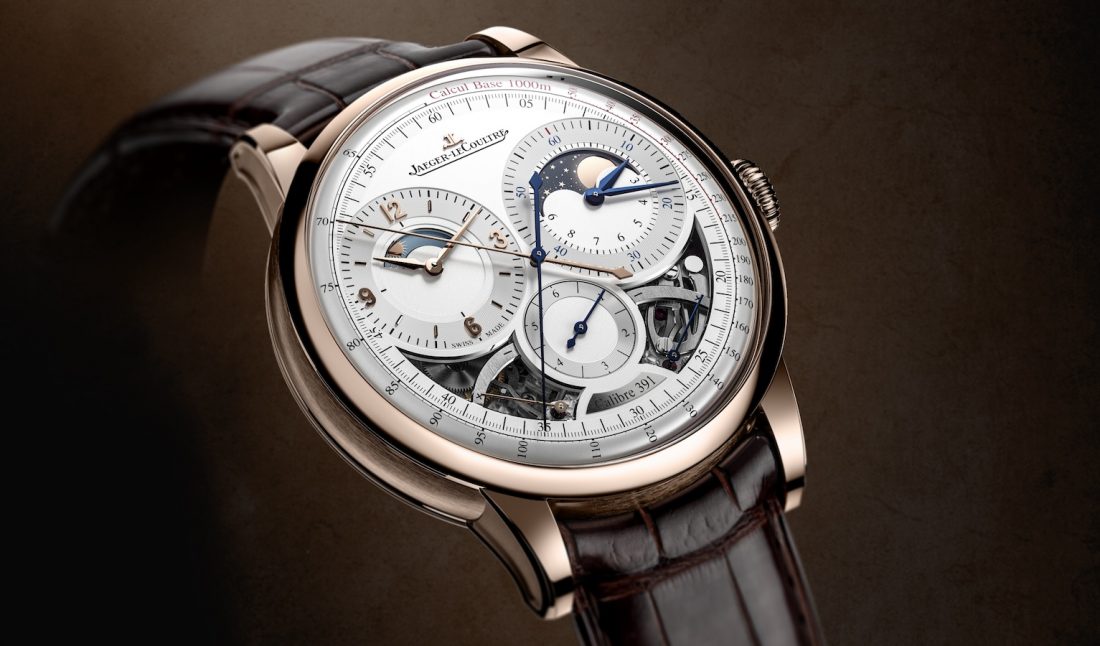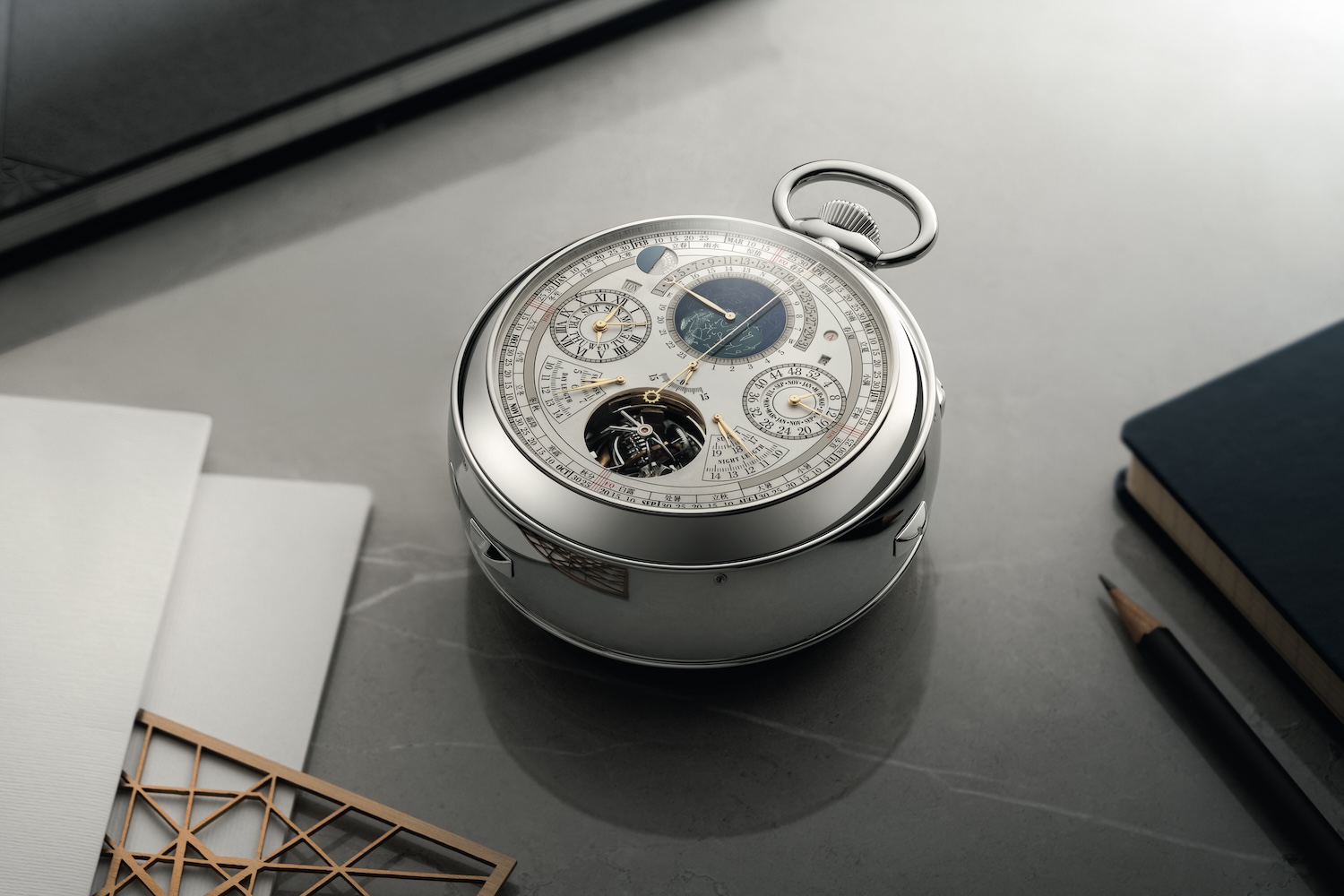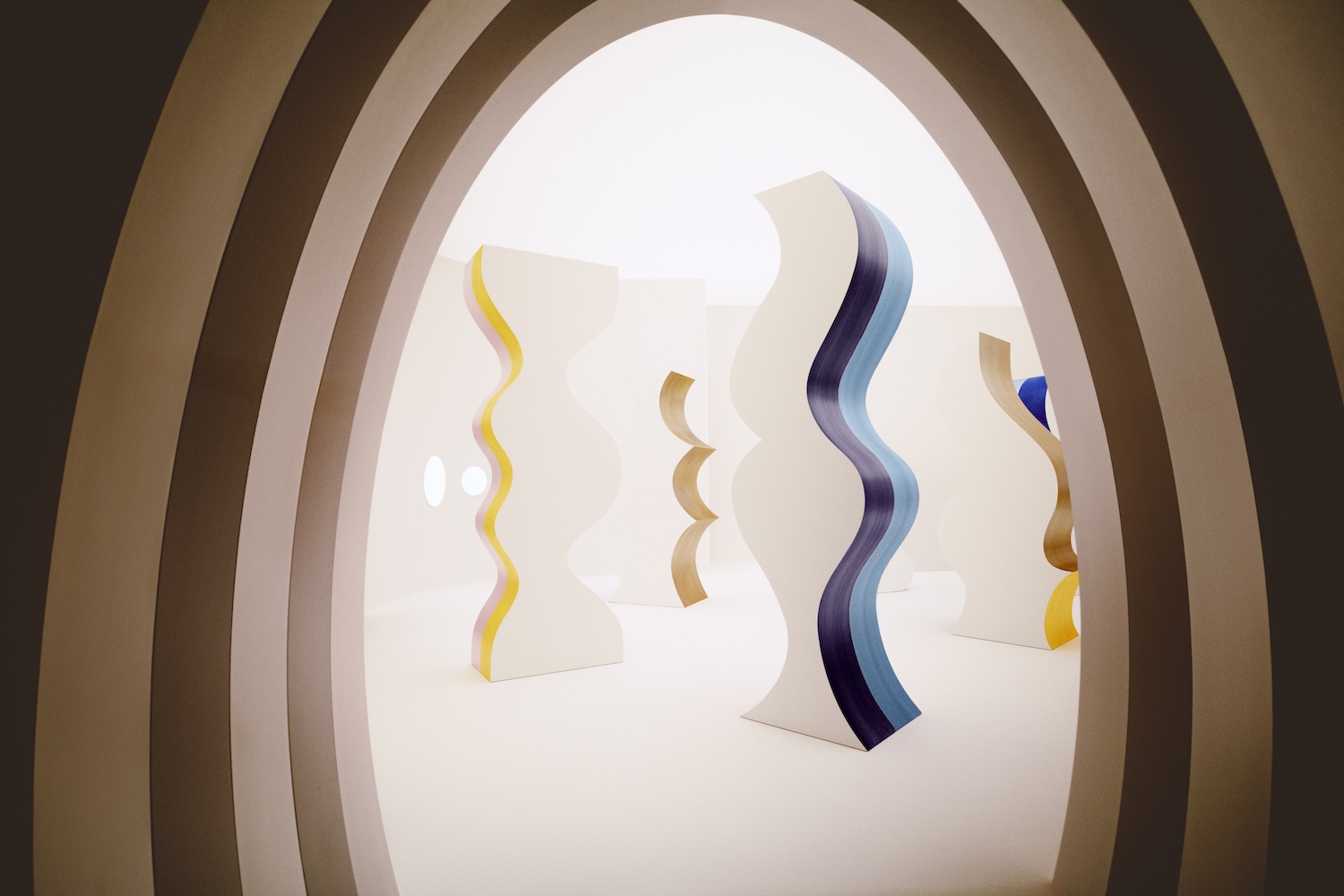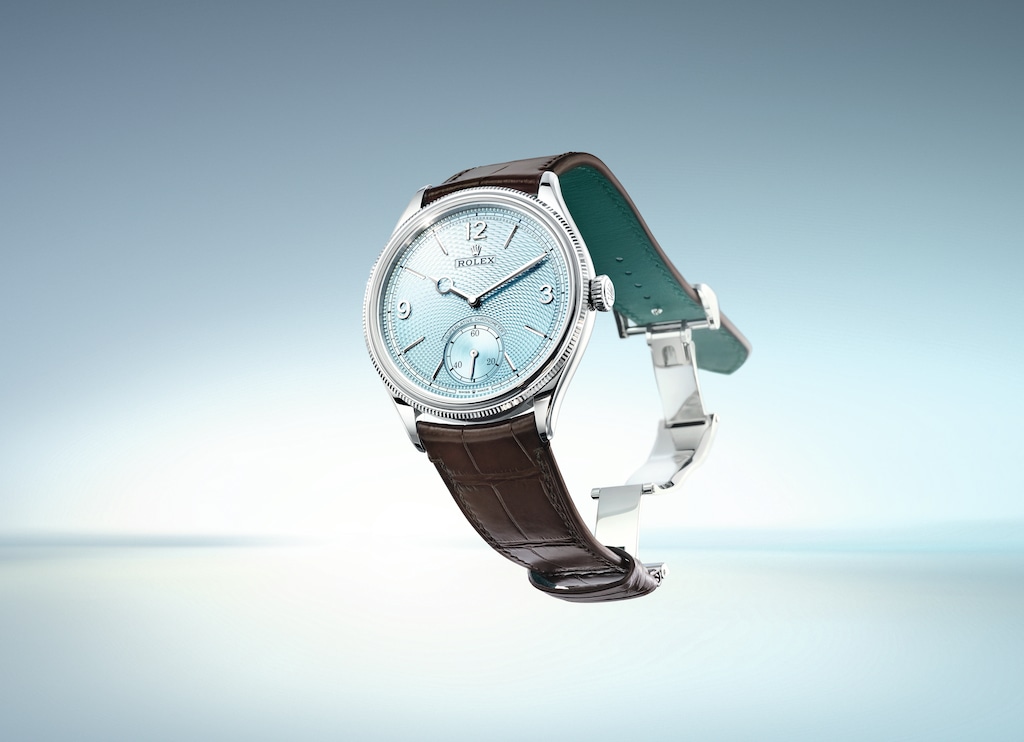For Watches and Wonders 2024 in Geneva, Jaeger-LeCoultre brings its driving mission of boundless innovation and triumphant creativity with three captivating new timepieces: the Duometre Chronograph Moon, the steel Duometre Quantieme Lunaire, and Duometre Heliotourbillon Perpetual. Precision in all its forms is of the utmost importance to the Maison, echoing the zeal and dedication of founder Antoine LeCoultre first sparked in his father’s blacksmithing forge, leading ceremoniously to the company’s foundation in 1833.
This year’s immersive theme imparts the “Story of Precision,” and the Watchmaker of Watchmakers envelops visitors within the house’s heritage while sharing contemporary insights on the realization of precision in the 21st century. A booth transported us with historic forge design details, and a theatrical fire pit gives way to the trailblazing tale.
In addition, the Atelier d’Antoine Discovery Workshops and Gastronomic Experience Inspired by Precision centered on education, traveling exhibitions, and the Made of Makers program—where artists uplift and translate the legendary Jaeger-LeCoultre savoir-fare. This year, two Michelin-starred Chef Himanshu Saini enriched the program with precision, imagination, and fantastical flair.
Whitewall had the opportunity to speak to Catherine Renier, Jaeger-LeCoultre’s CEO, about emotional storytelling, perfect rhythm, and an overall quest for education.
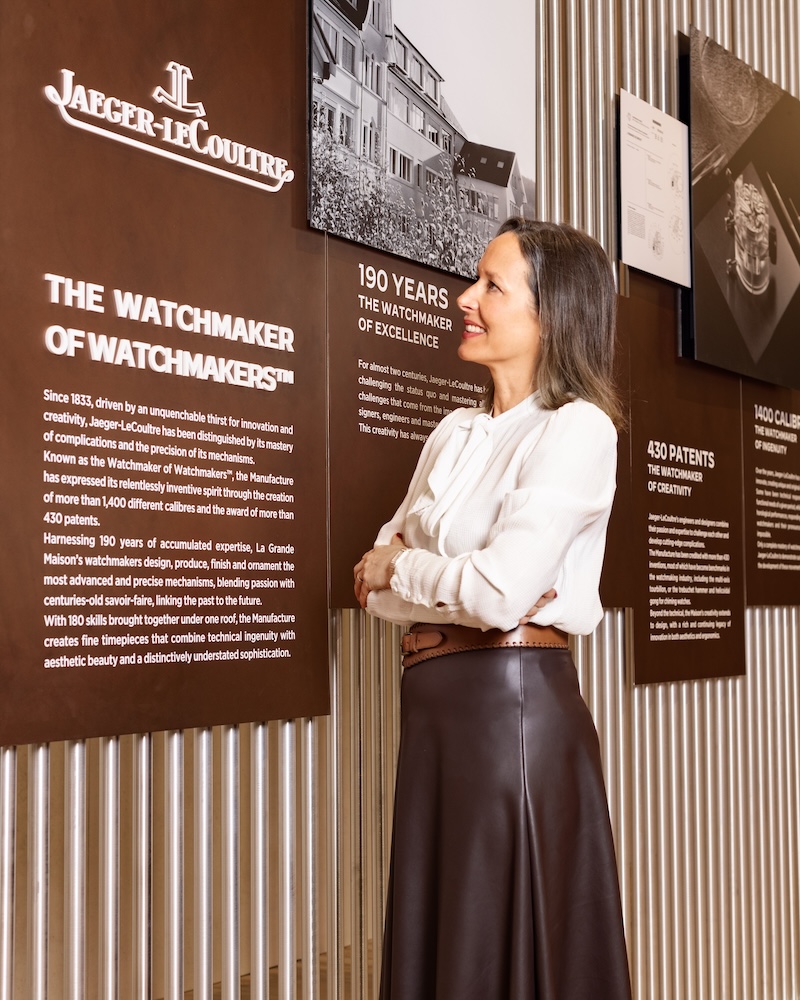 Jaeger-LeCoultre CEO Catherine Renier at Watches and Wonders 2024, photo by Johann Sauty, courtesy of Jaeger-LeCoultre.
Jaeger-LeCoultre CEO Catherine Renier at Watches and Wonders 2024, photo by Johann Sauty, courtesy of Jaeger-LeCoultre.
WHITEWALL: In our swiftly evolving digital age, how is Jaeger-LeCoultre’s ardent pursuit of mechanical precision increasingly integral to the Maison and its highly discerning, global clientele?
CATHERINE RENIER: Mechanical watches play a very different role nowadays than they did in the past—in particular, because of digital tools and digital watches. In past years, watches were actual tools that you really needed to tell time, and today you do not need to wear a watch. You have plenty on your wrist with other tools and in your hand with your phone. So the watch became another element, closer to an art piece, that you will gift to others for special moments or to yourself that you will wear as a symbol of your taste. It’s something more turned towards the respect of heritage and the respect of innovation.
Of course, the performance remains very important, even if it was the primary message in the 20th century when watches needed to be waterproof and even more precise. But the style, the look, the storytelling around the watch, and the emotion it creates, are as important. All that to say, precision is key because it’s a founding value of Jaeger-LeCoultre.
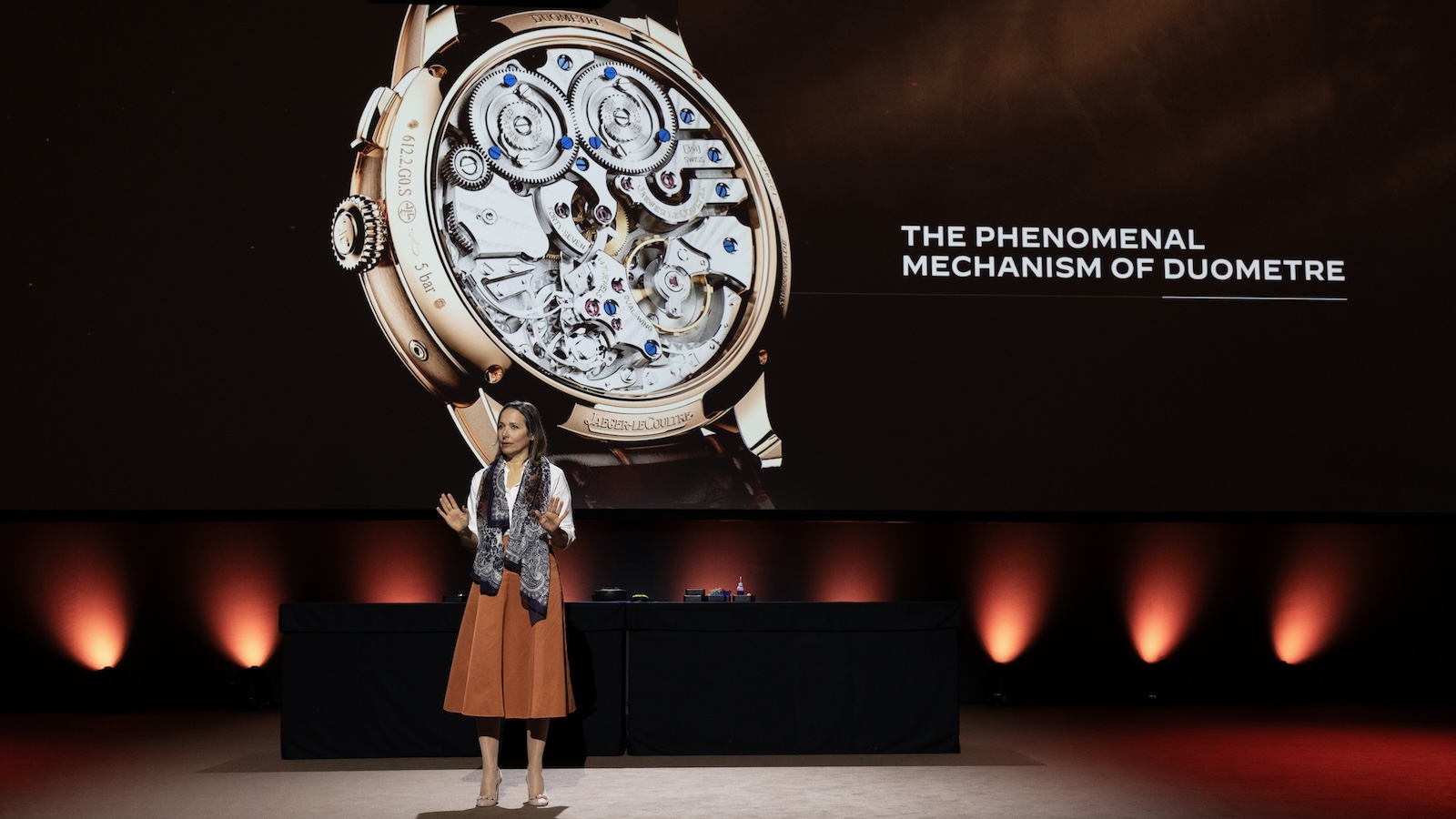 Jaeger-LeCoultre CEO Catherine Renier at Watches and Wonders 2024, photo by Johann Sauty, courtesy of Jaeger-LeCoultre.
Jaeger-LeCoultre CEO Catherine Renier at Watches and Wonders 2024, photo by Johann Sauty, courtesy of Jaeger-LeCoultre.
Unpacking the “Story of Precision” Through Artistic Expression
WW: What was the starting point for developing the house’s experiential “Story of Precision” at this year’s edition of Watches and Wonders in Geneva?
CR: Every year we want one of the themes of the Maison to be loud and clear to the public. We’ve talked in the last few years about making, about golden ratio as an element of design, this year it’s about precision. Every year there are thematics that have really been a foundation of the Maison for over 190 years. For precision, it is one of the founding moments of the Maison, with Antoine LeCoultre creating measurement tools and cutting machines to be the best at making components in watchmaking, and that’s what started Jaeger-LeCoultre as a manufacturer.
When it comes to precision, of course, we can go through the history of the Maison, which we do here and explain, but we want to take the public into what precision means today in watchmaking. We have a lot of demonstrations and artisans. Then, the next level of entryway into the world of precision for Jaeger-LeCoultre is more experiential. If you are not a watch aficionado, and you are entering our world, which we want to be open and welcoming, then maybe the technical side is not the easiest, because watchmaking technique can be a little frightening sometimes, or impressive, at least. You can enter through an artistic collaboration that we do through our Made of Makers program.
Each time we have a theme and a storyline, we will find an artist and ask him or her to work on their own artistic expression under the same theme and link back to Jaeger-LeCoultre. That is a way for us to tell the story through others so you’ll experience different emotions other than the technical aspect, and maybe an easier door sometimes than the very abrupt gear train, powering, or the regulating organ. So that is one way. The other is you sit down, and you understand what it took for the Chef Himanshu Saini to make these bites, and how he works also in the precision of his ingredients. Then the story unfolds in a different way, and because you are in our universe and our journey, you’re unpacking the “Story of Precision.”
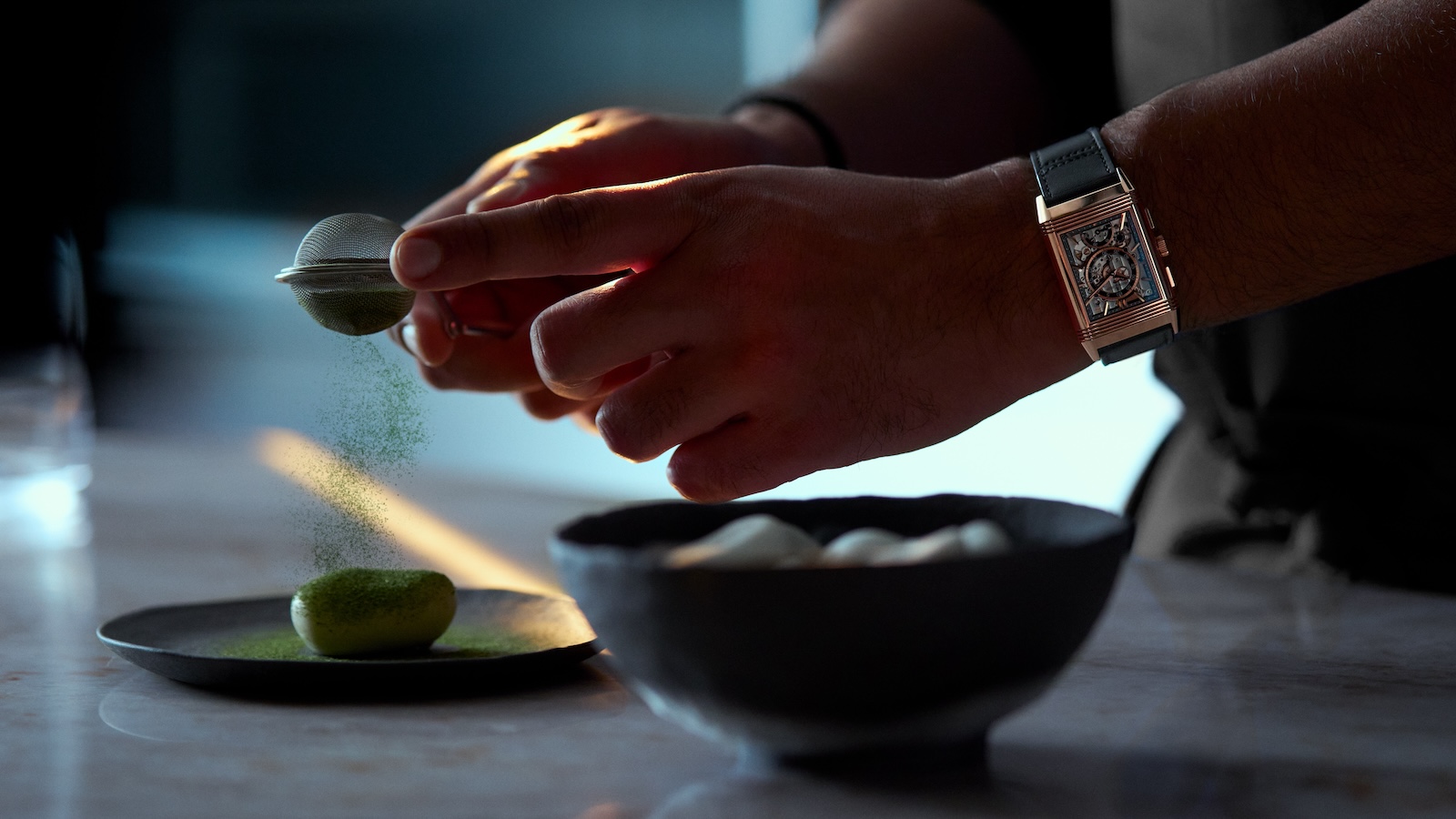 Chef Himanshu Saini’s Gastronomical Experience; courtesy of Jaeger-LeCoultre.
Chef Himanshu Saini’s Gastronomical Experience; courtesy of Jaeger-LeCoultre.
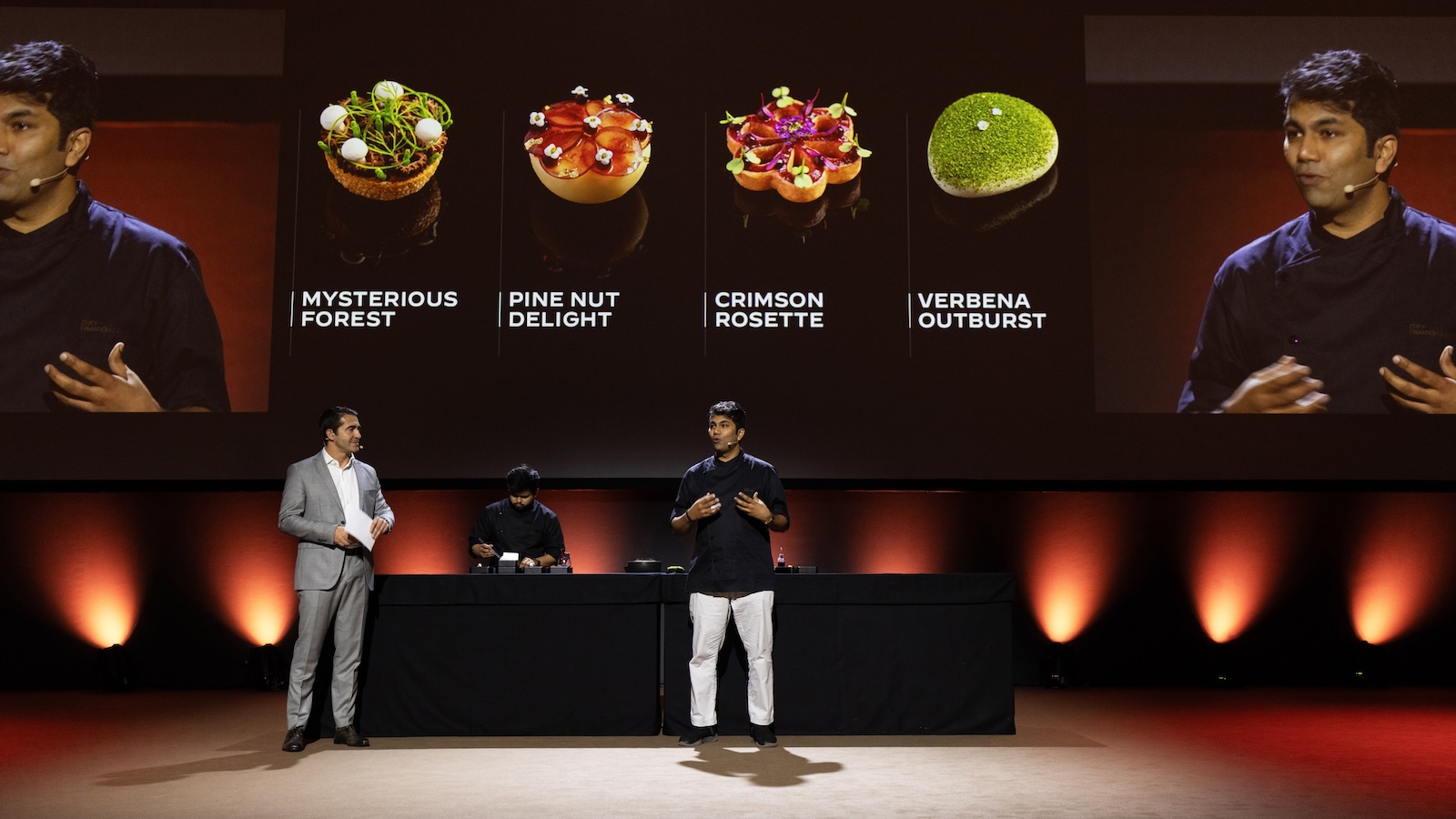 Chef Himanshu Saini with Jaeger-LeCoultre at Watches and Wonders 2024, ©Johann Sauty, courtesy of Jaeger-LeCoultre.
Chef Himanshu Saini with Jaeger-LeCoultre at Watches and Wonders 2024, ©Johann Sauty, courtesy of Jaeger-LeCoultre.
Jaeger-LeCoultre Unveils Three Shining New Models
WW: Under “The Glory of Precision,” the Maison rejoices in the pioneering Duometre concept, and collections first debuted in 2007. This year, Jaeger-LeCoultre unveils three shining new models. What was the source of inspiration for the unique artistry of Duometre Chronograph Moon, the steel Duometre Quantieme Lunaire, and Duometre Heliotourbillon Perpetual?
CR: The Duometre was, as a concept, invented in 2007. Originally, the first time we used two barrels of energy was in the late 19th century. At that time, the two barrels were just fueling energy, one on top of the other. Meaning, I get X hours of power reserve and then I can have double that with two barrels. The big innovation in 2007, was to put two gear trains going to just one regulating organ. And these two gear trains fit the energy power, and in fact one barrel will fuel the timekeeping, while the other will fuel the complication. Already it was the case in 2007, the best complication to demonstrate this well-managed energy is the chrono because the chrono requires a huge burst of energy when it starts, and it’s really an important moment for the watch and one where you can use precision in the timekeeping.
We wanted to again pay tribute to the chronograph and add a new element that required a new movement development with the moon. Then, we have a Duometre Quantieme Lunaire in steel, which is the first time Duometre comes in a steel case. The higher-end piece Heliotourbillon is Heliotourbillon with a perpetual calendar. The Heliotourbillon is a three-axis tourbillon so it fights better gravity and is a patented new cinétique of a multi-access tourbillon.
We also have a perpetual calendar on the top and bottom with the year, and you see the four is red because it is a leap year, and we have this very nice patent of indicating the leap year with a different color. Which requires the very ingenious wheel that in fact will have two number fours, one red, one black.
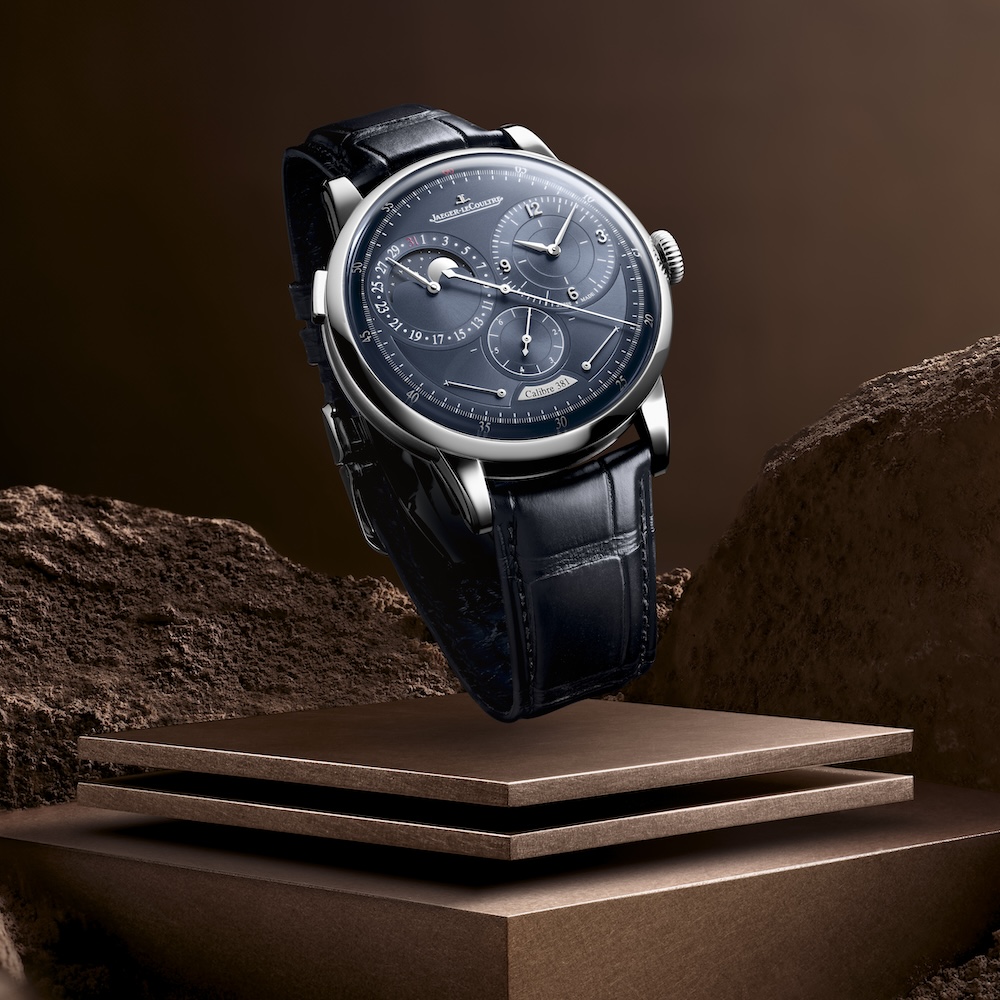 The Duometre Quantieme Lunaire Watch; courtesy of Jaeger-LeCoultre.
The Duometre Quantieme Lunaire Watch; courtesy of Jaeger-LeCoultre.
A Cinematic Showstopper at Watches and Wonders 2024
WW: In what ways do you hope guests embarking on the house’s cinematic booth will react to the 18th and 19th-century forge design details, culminating in a visceral mise en scène including oak, bricks, and a radiant fire pit set within iron stone?
CR: This is to attract attention and start the story, and it is a showstopper. It’s to bring in precision thematics. You enter the booth, it’s very open, and very welcoming, there are many entry points where you get to unlock the story. But the show itself with the movie is a very good way to say, OK, this is what they are talking about, and be really immersed as a good first point into the discovery. And then very naturally you go to the product, or even more naturally to the artisans that are around, which are quite carefully selected. The four artisans we have are not the traditional know-how that you will find in watchmaking booths in general.
Take the hairspring shaper, there is only one or two in the manufacturer. We are one of the few manufacturers, if not the only one, to shape our hairsprings ourselves for our own movement. This is a know-how that’s extremely rare, but extremely important for the watch precision, because the hairspring is key in the regulating organ to be the most resistant to gravity, but also for the oscillation to be perfect, and well rhythmed.
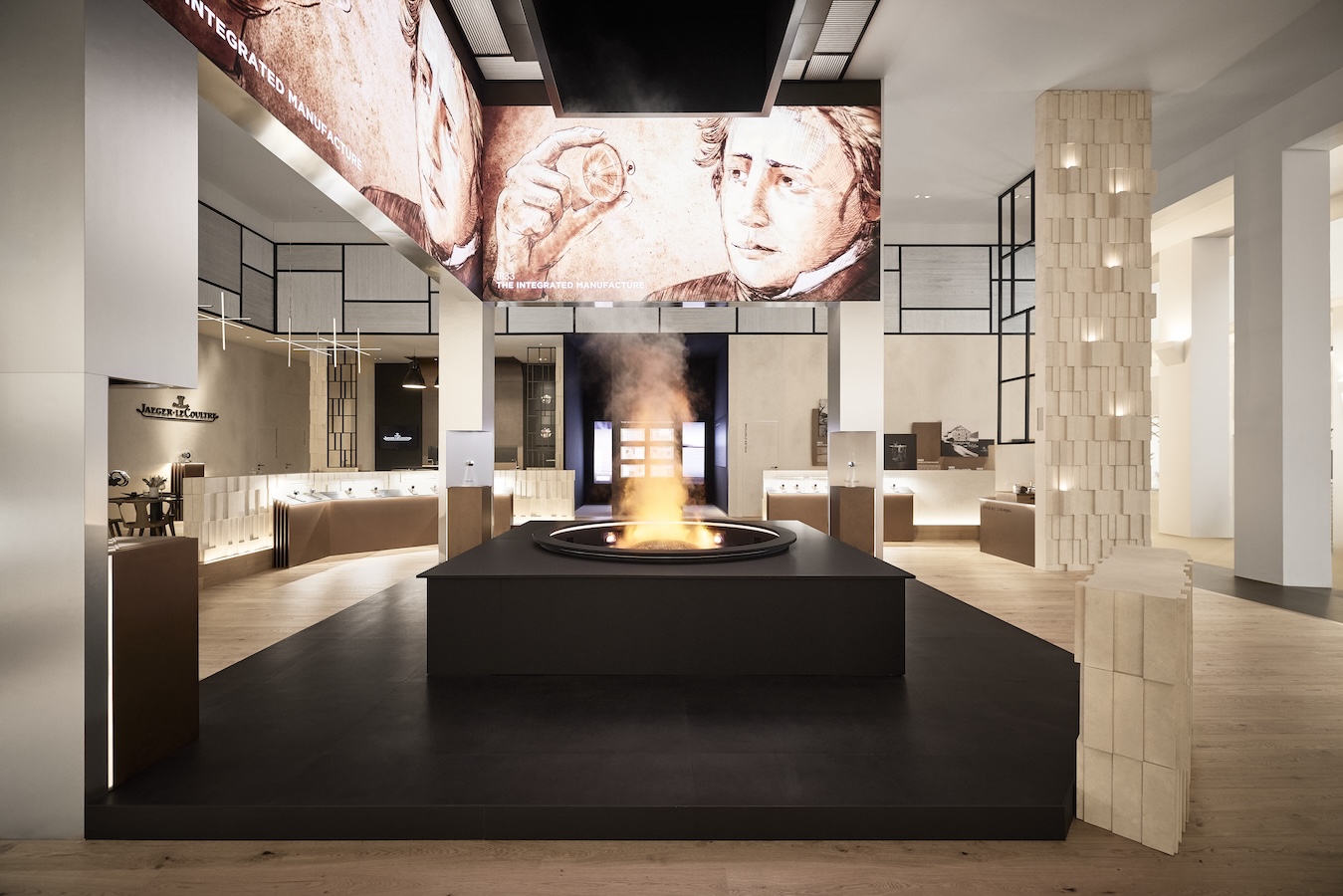 Jaeger-LeCoultre at Watches and Wonders 2024, ©Johann Sauty, courtesy of Jaeger-LeCoultre.
Jaeger-LeCoultre at Watches and Wonders 2024, ©Johann Sauty, courtesy of Jaeger-LeCoultre.
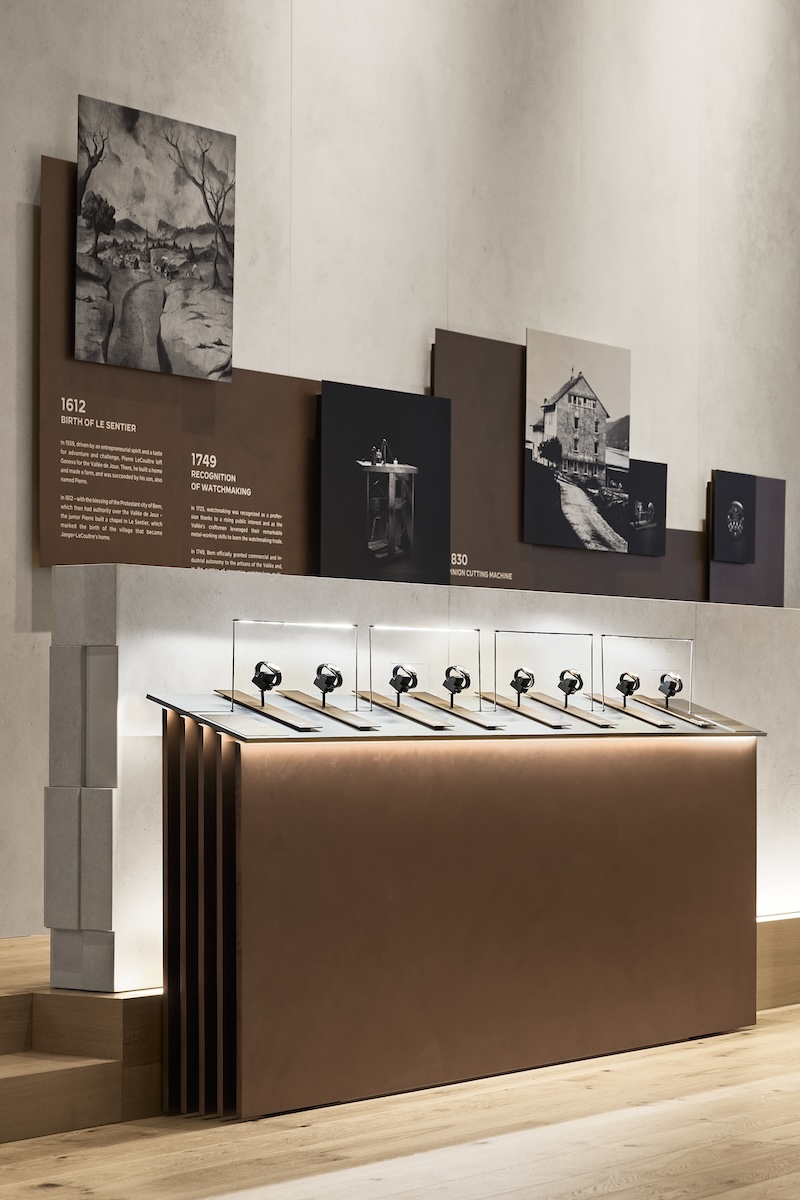 Jaeger-LeCoultre at Watches and Wonders 2024, ©Johann Sauty, courtesy of Jaeger-LeCoultre.
Jaeger-LeCoultre at Watches and Wonders 2024, ©Johann Sauty, courtesy of Jaeger-LeCoultre.
Traveling Atelier d’Antoine Discovery Workshops and Gastronomic Experience Inspired by Precision Debut
WW: Within the premier event, how will the Atelier d’Antoine Discovery Workshops and Gastronomic Experience Inspired by Precision invite devoted and new clientele alike to singularly explore the brand’s illustrious heritage and forward-thinking mentality?
CR: The Atelier d’Antoine is really part of an overall quest for education. We want to be, as Watchmaker of Watchmakers, a Maison that will educate the public with receptivity to watchmaking history and techniques.
For that, first of all, we open our manufacturer for visitors. Second of all, we created the Atelier d’Antoine which is more than a watch assembly movement. It is a true workshop for different themes, precision but also sound-making classes, Reverso classes, and these classes are both experiential with small mockups, large scale, and very cultural because they give a lot of history and context on each of these themes into Jaeger-LeCoultre and watchmaking.
The Atelier d’Antoine was first born in our manufacturer and is being deployed in our boutiques. New York recently, also in Shanghai, and soon in Dubai. Through our traveling exhibitions around the world, we also bring Atelier d’Antoine with themes for the public.
For instance, the Precision exhibitions will go to Dubai with a full immersive heritage experience, and the Atelier d’Antoine will follow and deliver the Precision Workshop. This is how this Atelier lives through.
Then there is the culinary experience. This is a second pillar of how we want the public to understand Jaeger-LeCoultre. This pillar is about the link between horology and forms of art. This year we worked for Precision with a chef. We will reveal other artists during the year with totally other themes. This Made of Makers program will be showcased and displayed primarily through our exhibitions.
The Chef Himanshu Saini will be in our exhibition in Dubai and his kitchen will be also part of the entertainment, it’s for the public to embark upon. When we had The Reverso Stories exhibition in New York, Nina Métayer was there as we worked with her on pastry, and Golden Ratio, and we had her come for the exhibition. This is the way we work: the key messages of the Maison, education and artistic components, and working with many different artists. We also worked with another New York-based artist the year before, which was Alex Trochut. He’s a lettering artist. He created a specific alphabet for Reverso based on the Art Deco Inspiration design. So now you can engrave your Reverso, I did in fact for mine, with Alex Trochut lettering, which are proprietary to Jaeger-LeCoultre and Reverso.
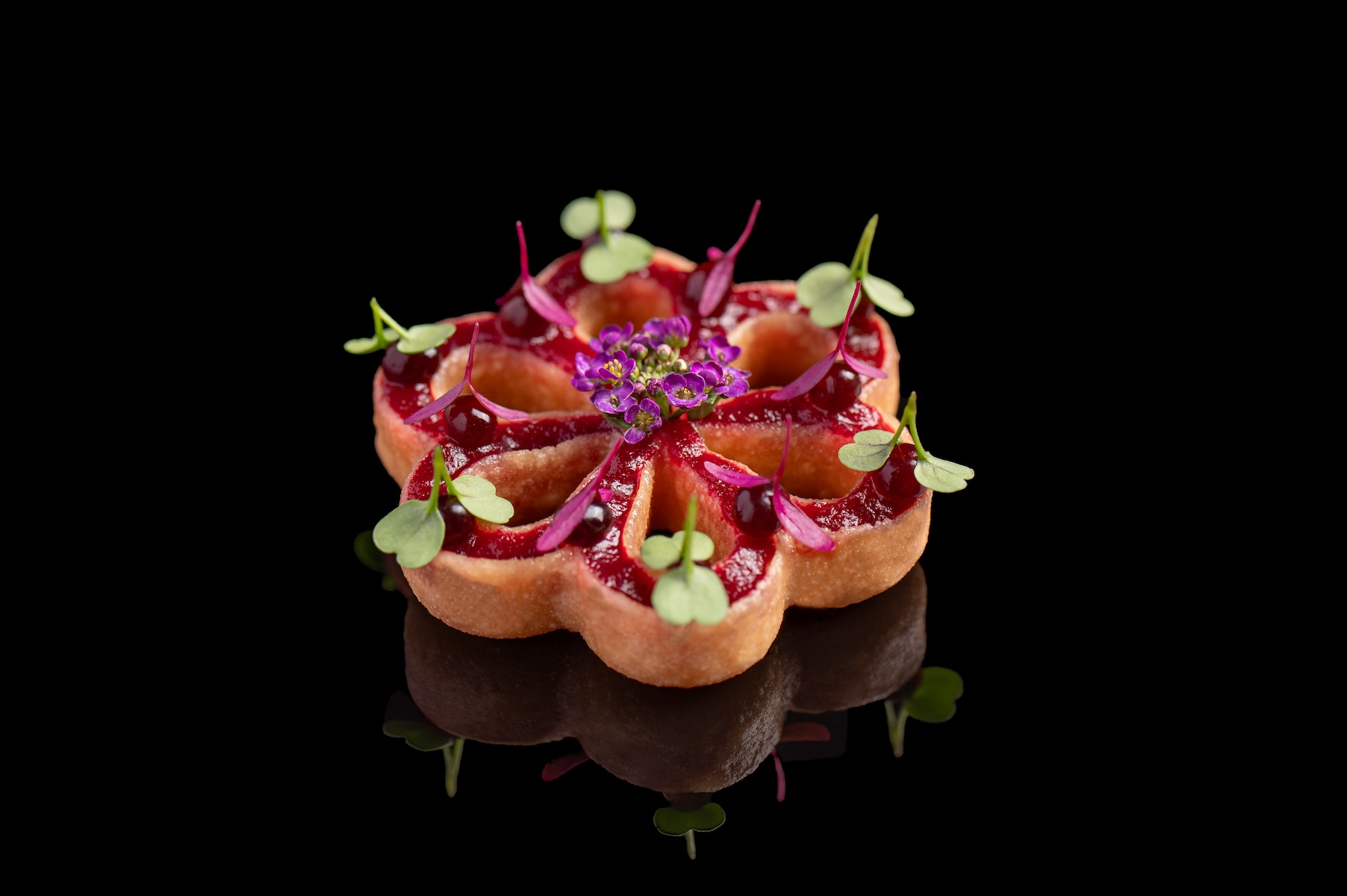 Chef Himanshu Saini’s Gastronomical Experience; courtesy of Jaeger-LeCoultre.
Chef Himanshu Saini’s Gastronomical Experience; courtesy of Jaeger-LeCoultre.
WW: How do the rich story of Swiss watchmaking and the journey of the LeCoultre family—which will be projected onto sweeping LED screens—embrace the human-centric past, present, and future of the Maison?
CR: We believe that the more you explain, the more you educate. In a world that is complex, to give context based on 200 years of history gives meaning to what we do today.
We have a family that created our manufacturer, where we still are today, our founding values, + 1400 calibers, +430 patents, a lot of innovation. I love the fact that you can bridge the past to the present, and also build the future for what we have done and who we truly are. We don’t try to be someone else. That’s a guiding principle for us to know we are on track with Jaeger-LeCoultre identity.
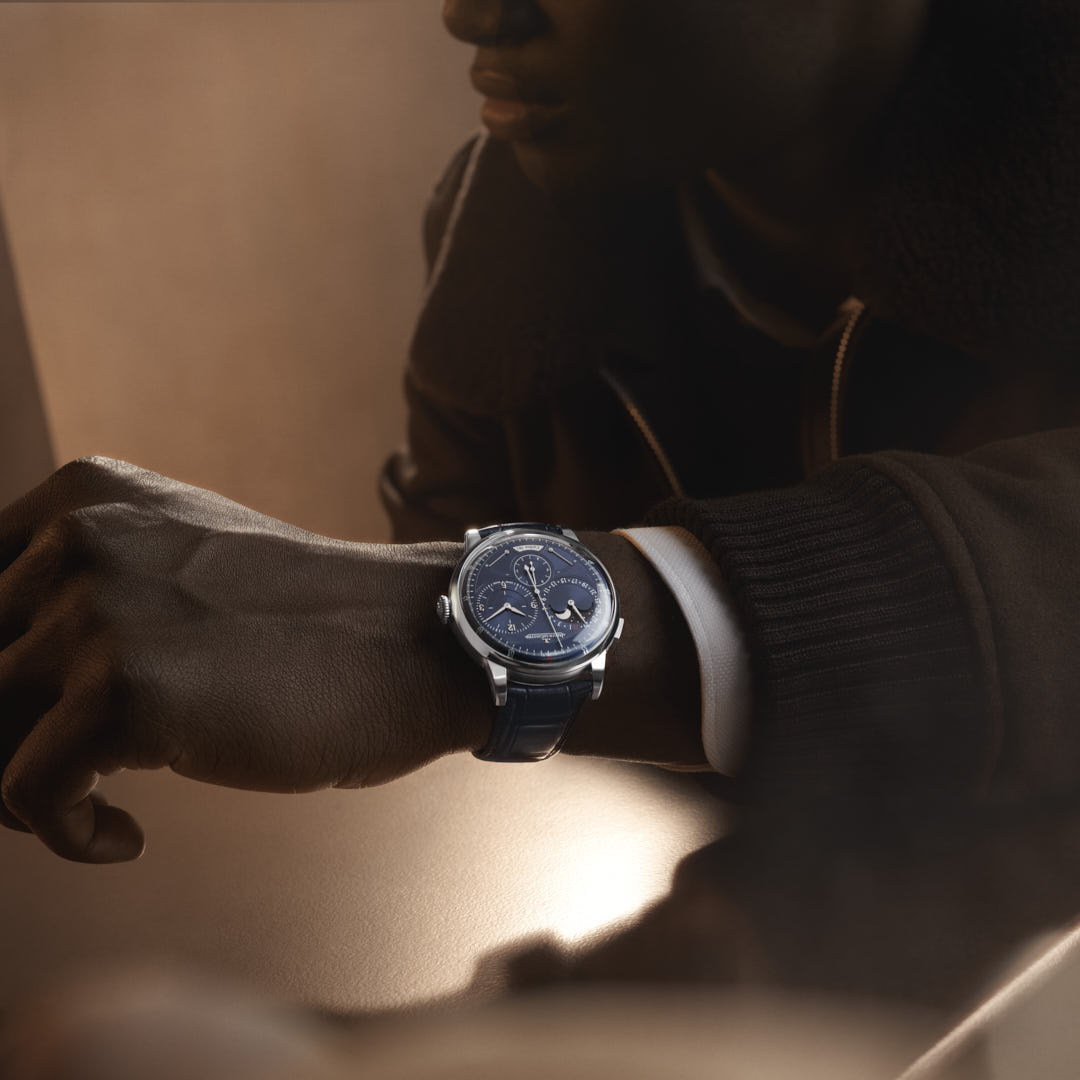 The Duometre Quantieme Lunaire Watch; courtesy of Jaeger-LeCoultre.
The Duometre Quantieme Lunaire Watch; courtesy of Jaeger-LeCoultre.






